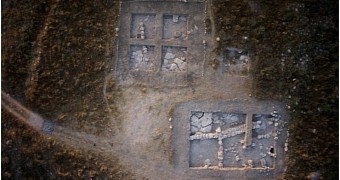Researchers speaking at a recent meeting of the European Association of Archaeologists detailed the progress thus far made in exploring a site in present-day Israel.
The archaeological site, dubbed Tel Burna, was extensively surveyed back in 2009. However, excavation work only began in the summer of 2010.
Since they first started peering into the makeup of this site in Israel until present day, researchers have partially unearthed the remains of a cult complex that they say was built roughly 3,300 years ago.
While excavating the site, they came across several artifacts, among which mask fragments, freakishly big jars, cups and even animal bones that show signs of having purposely been burnt and that hint at ritual sacrifices.
Still, specialists exploring Tel Burna have not yet been able to figure out what deity the people who built and visited the cult complex on a regular basis worshiped.
What's been discovered thus far
Information shared with the public says that, according to evidence at hand, this cult complex in present-day Israel was quite big. Thus, archaeologists say that just its courtyard covered an area of 52 by 52 feet (16 by 16 meters).
As mentioned, several mask fragments have until now been unearthed as this site. Specialists who have had the chance to examine them say that these fragments, both of which appear to be noses, are surprisingly large.
Although evidence at hand indicates that people worshiping at this site really did wear the masks that these noses used to belong to during ceremonies, it is unclear whether the masks depicted any specific figures.
Of the jars discovered at this archaeological site, some were big enough for an adult to sit inside them and still have room to sneak in a snack. Specialists are yet to determine what use the people who built the complex had for these jars.
This is yet to be confirmed, but they suspect that the massive vessels served to hold food that the people who came to worship at this complex ate either during or following ritual ceremonies, Live Science informs.
The most interestingly artifact thus far recovered at this site is a string of three cups that are all connected to one another. Scientists are now busy analyzing residue samples collected from inside these cups, and hope to soon determine what potions or beverages were hold in them.
Several chalices, goblets and figurines depicting odd creatures whose anatomy was a mix and match of human and animal body parts have also been unearthed at this site. Whether these objects were used in ceremonies remains a mystery.
Trouble figuring out whom the complex was dedicated to
Despite having recovered and analyzed quite a lot of artifacts, archaeologists find it impossible to point at a deity and say without a shadow of a doubt that the cult complex was built in its honor.
The strongest candidates are an ancient storm god named Baal, and a war goddess identified as Anat. It is expected that, as work at this archaeological site progresses, researchers will find enough evidence to establish whom the complex was meant to honor.

 14 DAY TRIAL //
14 DAY TRIAL //